Hoi An Ancient Town is a well-known city in Quang Nam province, with over 1,000 architectural relics ranging from streets, houses, assembly halls, communal houses, pagodas, shrines, and ethnic churches, as well as ancient wells and traditional dishes. A trip to Hoi An will enchant travelers with its ageless, highly rustic, and simple charm.
The journey to Hoi An will stimulate all of your senses. Hoi An combines numerous gorgeous landscapes, diverse culinary and distinctive festivals. So, What is Hoi An famous for? This essay will undoubtedly be a trustworthy and useful companion on every step of the way.


The Magic of Hoi An – Why Hoi An Holds a Special Place in Every Traveler’s Heart?
Show table of content
- 1. Introduce Hoi An in Vietnam
- 1.1 Where is Hoi An in Vietnam
- 1.2 Hoi An history
- 2. What is Hoi An famous for?
- 2.1 Hoi An Ancient Town – The oldest quarter in Vietnam
- 2.2 Tailoring and Clothing
- 2.3 Diverse Cuisine
- 2.4 Traditional Festivals
- 2.5 Unique Cultural
- 2.6 The beautiful Beaches
- 2.7 My Son Sanctuary – a UNESCO Heritage Site
- 2.8 Cam Thanh Coconut Village
- 3. Things to do in Hoi An
- 3.1 Discover Hoi An Ancient Town
- 3.2 Watch lanterns at night in Hoi An Ancient Town
- 3.3 Cruise on Hoai River and drop lanterns
- 3.4 Watch Hoi An Memory Show
- 3.5 Explore Hoi An Night Market
- 3.6 Enjoy the Hoi An specialties
- 3.7 Check in Moonlight Bridge
- 3.8 Watching An Bang beach at night
- 4. How to get to Hoi An?
- 4.1 By private car
- 4.2 By taxi
- 4.3 By motorbike
- 4.4 Join Hoi An Day Trip From Da Nang
- 4.5 Join Hue to Hoi An tour
- 5. Useful travel tips
1. Introduce Hoi An in Vietnam
1.1 Where is Hoi An in Vietnam
Hoi An is a city located in the Quang Nam province in central Vietnam, located downstream of the confluence of the Thu Bon River and 30 kilometers southeast of Da Nang city. Hoi An used to be known in the international market by many different names such as Lam Ap, Faifo, Hoai Pho and Hoi An. Hoi An, in particular, is one of the few cities in Vietnam with both sea and island, resulting in geographical and ecological diversity and a high potential for economic, social, and tourism growth.


1.2 Hoi An history
Hoi An, originally known as Faifo, emerged as a bustling trading port during the 16th and 17th centuries. It attracted merchants from China, Japan, Europe, and other parts of Asia, who came to exchange goods such as silk, ceramics, spices, and tea.
Chinese and Japanese merchants established communities, leaving behind distinct architectural styles and cultural practices.
During the 17th and 18th centuries, Hoi An was a thriving international trading port, attracting Japanese, Chinese, and Western merchant ships alike. Prior to this period, this location had vestiges of the Champa commercial port, which was frequently mentioned with the maritime Silk Road. Hoi An port steadily decreased in the nineteenth century as waterway transit became less feasible, giving place to Da Nang, which was being developed at the time by the French.
In recent decades, Hoi An has experienced a resurgence as a tourist destination, attracting visitors from around the world to its well-preserved ancient town, traditional markets, and cultural festivals.


2. What is Hoi An famous for?
2.1 Hoi An Ancient Town – The oldest quarter in Vietnam
Hoi An Quang Nam city is separated into two sections: Hoi An’s ancient town and the rest. Hoi An historic town is located on key roads near the river bank, such as Nguyen Thai Hoc street, Bach Dang street, Phan Chau Trinh street, Tran Phu street, Tran Hung Dao street, and Le Loi street.
Hoi An ancient town has been recognized as one of the UNESCO world heritage sites since 1999. Hoi An has gradually become one of the most attractive tourist destinations in Vietnam.
The old town of Hoi An is a unique example of a classic Southeast Asian port town that has been carefully conserved. Hoi An is also a land of cultural exchange and intrusion. Assembly halls and temples with Chinese influences coexist alongside traditional Vietnamese homes and mansions designed in the French style…
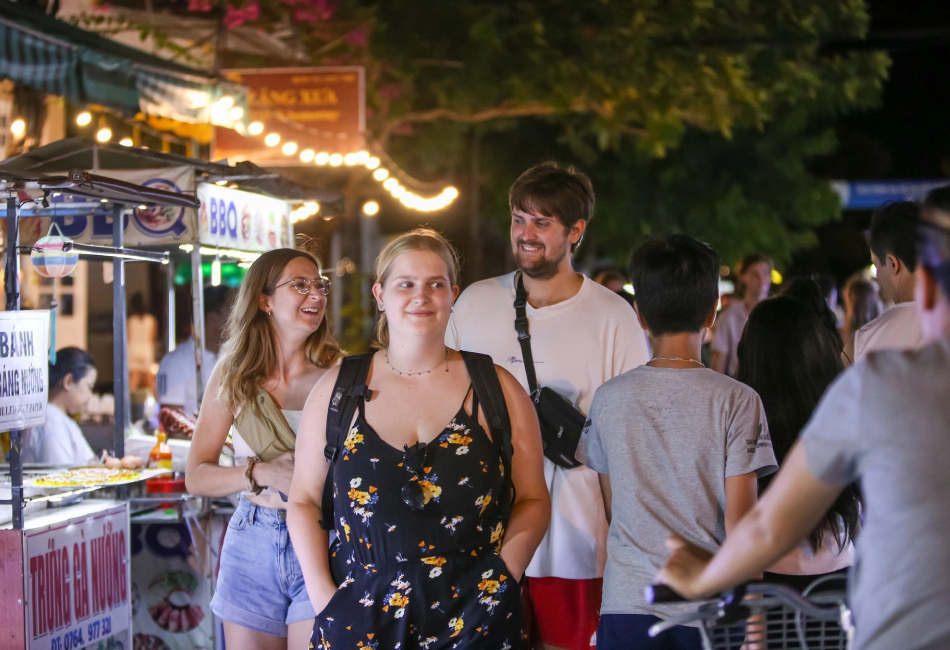


2.2 Tailoring and Clothing
Hoi An is famous for its skilled tailors who can create custom-made clothing at affordable prices. Consider getting clothes tailored during your visit, but be sure to research reputable tailor shops and allow enough time for fittings.


2.3 Diverse Cuisine
Hoi An cuisine is quite diverse, although each has distinct Central Coast features. Hoi An specialties combine a variety of ingredients from the highlands, woods, plains, and sea. When we visit Hoi An, we often come across meals that combine Chinese and Western culinary influences.
Indulge in the delicious local cuisine of Hoi An, which includes specialties like Cao Lau (noodle dish with pork and herbs), White Rose Dumplings, and Banh Mi (Vietnamese baguette sandwiches). Be sure to also try the local street food and seafood dishes at the night market along the Thu Bon River.
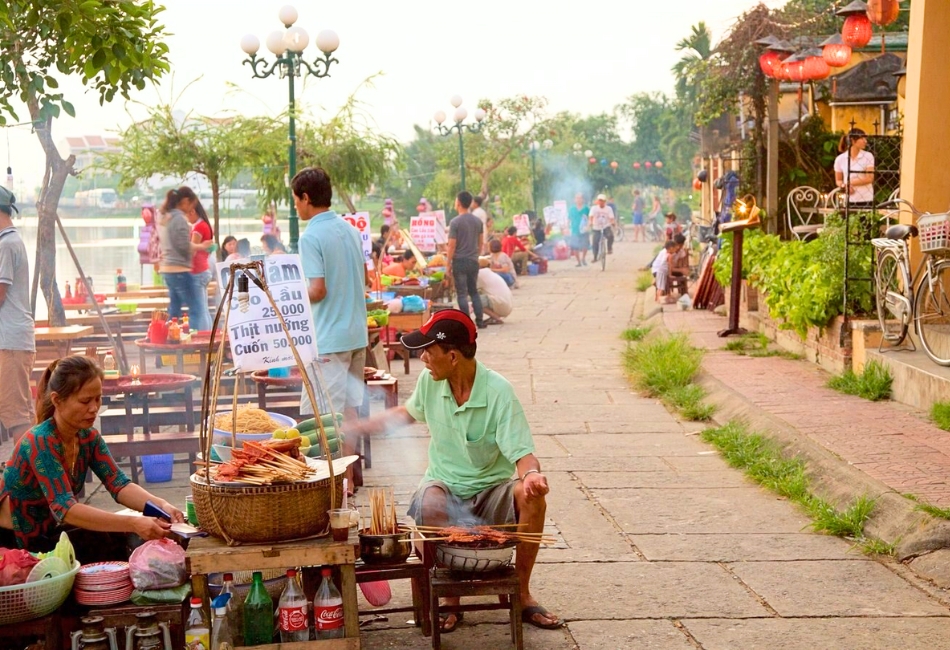

2.4 Traditional Festivals
Hoi An’s festivals are regarded as an essential component of the old town’s traditional culture. The Hoi An Festival is incredibly rich and unique, reflecting indigenous culture and traditions.
2.5 Unique Cultural
People sometimes use the phrase “one step through three cultures” as evaluating Hoi An. That phrase suggests that simply coming to Hoi An allows you to experience three cultures: Japan – China – Vietnam.
- Chinese culture: Fujian residents from China were among the first traders in Hoi An at the time. As an increasing number of foreign Chinese merchants arrived by boat in Hoi An to trade and exchange goods, it was unavoidable that Chinese culture would affect the town. Hoi An clearly demonstrates Chinese culture in two areas: architecture and cuisine. Chinese Assembly Halls have become popular tourist sites, attracting a large number of domestic and foreign tourists. Some Chinese Assembly Halls to visit in Hoi An include the Cantonese Assembly Hall, the Fujian Assembly Hall, the Chaozhou Assembly Hall, and the Quynh Phu Assembly Hall. Regarding typical Hoi An cuisine, the Chinese cultural influence is most clearly shown through Cao Lau, this is a must-try dish when coming to Hoi An.
- Japanese culture: The Cau Pagoda, commonly known as the Japanese pagoda, is one of Hoi An’s remaining symbols of Japanese culture.
- Dai Viet culture: When the Dai Viet state took over this territory, it gave rise to the name Hoi An. The traditional craft villages, ancient buildings with ancient Vietnamese architecture, and the indigenous people’s preserved lifestyles are the most obvious examples of Dai Viet culture’s influence.
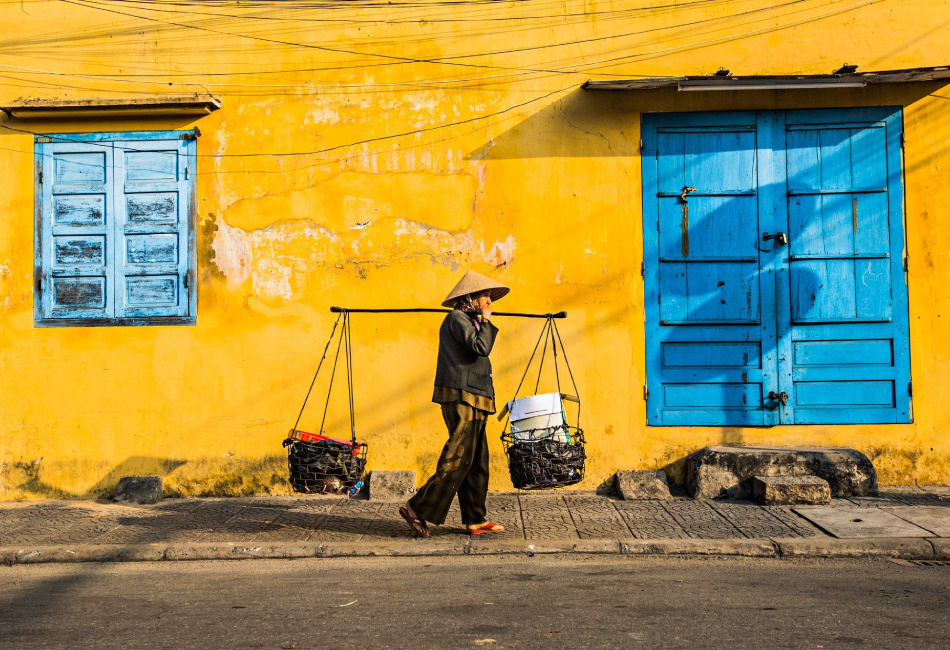

2.6 The beautiful Beaches
Hoi An is not only famous for its bustling ancient streets and tranquil countryside villages, but it also boasts many extremely impressive and charming pristine beaches. Some beautiful beaches are loved and chosen by many tourists when coming to Hoi An such as:
- Cua Dai Beach: Located just 5km from the center of Hoi An, is the most beautiful and famous beach in the old town with clear emerald green water and long stretches of fine white sand, combined with the blue sky, painting an extremely vivid picture of nature.
- An Bang Beach: An Bang is a beach with wild, rustic and poetic simplicity. Once voted as one of the 100 most beautiful beaches on the planet, An Bang beach deserves to be a great stop for any tourist who loves the beauty of blue sea and white sand.
- Tam Thanh Beach: Tam Thanh Beach is situated approximately 7km east of Tam Ky city, Quang Nam province, nestled quietly behind a forest that blocks the waves, offering a peaceful and pristine scenery. From the refreshing green coconut trees lining the beach to the crystal-clear blue waters and gentle waves caressing the sandy shore stretching for kilometers, all contribute to an idyllic setting, perfect for nature lovers seeking a tranquil and cool space to enjoy.


2.7 My Son Sanctuary – a UNESCO Heritage Site
My Son Sanctuary is the famous historical heritage of Quang Nam province, featuring a unique complex of Cham Pa temples. The archaeological site was discovered in 1885 and was recognized by UNESCO as a World Cultural Heritage Site in 1995. The area spans approximately 2km in diameter with over 70 different tower temples showcasing various architectural styles representing the different developmental periods of ancient Champa civilization. With its unique and sophisticated design, the site is divided into 6 characteristic styles: ancient, Hoa Lai, My Son, Po Nagar, Dong Duong, and the style of the Binh Dinh people.
When exploring the My Son Sanctuary, visitors will notice distinctive features of this architectural form, including stone carvings, statues of the deity Shiva, and carved Apsara dancers in the Cham Pa style. Over time, the site has suffered partial damage from bombings by the U.S. military during the Vietnam War. However, many towers and unique architectural features still remain intact. And if you want to learn and explore in depth about My Son Sanctuary, you can refer to My Son Sanctuary From Hoi An with VM Travel’s quality service and knowledgeable guides, we will bring you the most enjoyable and satisfying trip.


Related Tour: My Son Sanctuary From Hoi An – Half Day Group Tour
Read More: My Son Sanctuary – a UNESCO Heritage Site
2.8 Cam Thanh Coconut Village
If you’re seeking an authentic Hoi An experience, consider to visit Cam Thanh Coconut Village. Located about 3 km from the city of Hoi An, it’s one of the most beautiful and peaceful countryside areas, surrounded by rivers and coconut groves. There are countless exciting experiences awaiting in the coconut village, such as taking a ride on traditional basket boat through the lush coconut groves, observing local fishermen skillfully casting their nets to catch fish, and enjoying performances of basket boat dancing and thrilling boat racing. It’s truly an ideal place to immerse yourself in nature and authentic rural life of Hoi An.
For convenience and ease in exploring this destination, you should book yourself a Cam Thanh Coconut Village tour from Hoi An. There are plenty of enticing experiences awaiting you, so let us help you create memorable moments for your journey exploring the countryside of Hoi An.


Related Tour: Hoi An day Trip from Da Nang – Deluxe Group Tour
Read More: Hoi An Coconut Village
3. Things to do in Hoi An
3.1 Discover Hoi An Ancient Town
What is Hoi An famous for? Hoi An Ancient Town was a thriving port town that went through several epic historical periods and remains a national pride to this day. So, which historical structures have been conserved and become the pride of the Quang people that you should not miss when visiting the old town? VM Travel will offer you must-try options below:



Tan Ky Ancient House
Built 200 years ago, this structure is unique in that it combines the architectural styles of three cultures: Vietnamese, Chinese, and Japanese. The Le family previously lived here. The house featured several rooms, with the front for trading and the back for importing items. Tan Ky old House is on the list of old houses designated as national cultural heritage, and it was chosen as the only location in Hoi An to host domestic and international heads of state.


Trieu Chau Assembly Hall
It is also known as the Ong Bon Pagoda and is one of the earliest architectural works in the ancient town of Hoi An. The Chaozhou Assembly Hall’s unusual architecture attracts visitors with exquisite sculptures and precise patterns on substantial timber constructions. In particular, the art of embossed patterns in porcelain and porcelain is used to produce unique elements that bring beauty and elegance to the project.


Phung Hung Ancient House
This ancient house was constructed in the nineteenth century and is almost a century old. The mansion was previously owned by a well-known and rich merchant. With the hope that his family will always flourish, he adopted the name “Phung Hung”. With unique architecture of three cultures: Japan, China, and Vietnam is made up of numerous tall wooden bars, with a large corridor surrounding the home and its typical Asian elements.


Cau Pagoda
Built in the late 16th century, it is regarded as a dazzling pearl in the heart of Hoi An. Chua Cau, located in the heart of Hoi An’s ancient town and across the picturesque Hoai River, is a must-see for anybody visiting Hoi An. The pagoda’s unique roof is composed of wood and painted with images from the “land of cherry blossoms,” hence the name Japanese bridge. With its unique beauty, the Covered Bridge has become a must-see tourist attraction whenever Hoi An is discussed.


Hoi An Handicraft Workshop
This location brings together the majority of the famous long-standing traditional handicrafts of Hoi An and Quang Nam, including mat weaving, cloth weaving, pottery production, lacquer… You will be able to watch the skilled hands of talented artisans. You can also participate in some phases of the process of making handmade products and purchase them as souvenirs and gifts.
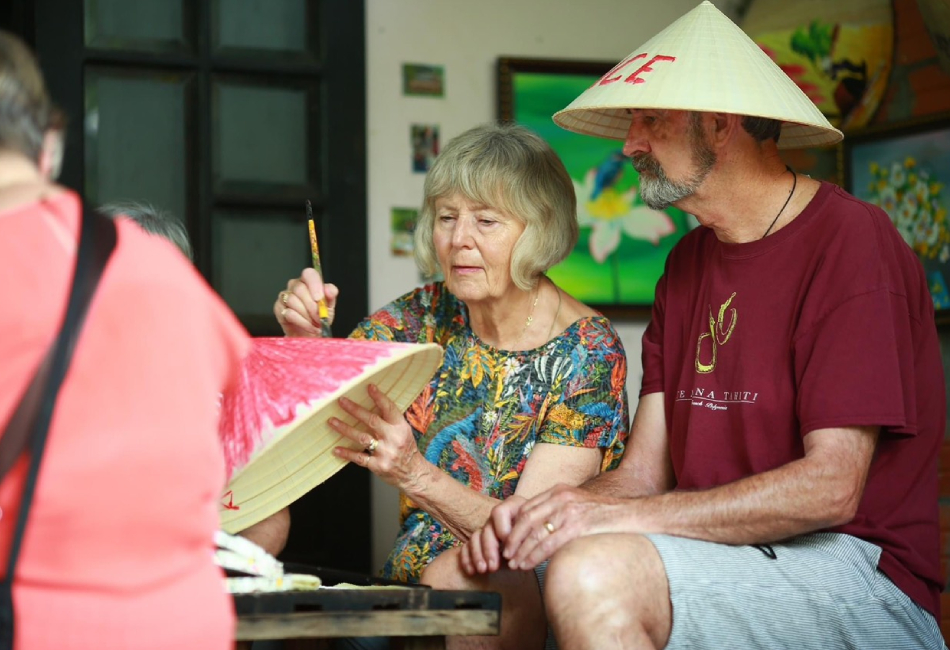

Toc Tran Church
Built in 1802 by a mandarin from the Tran family, a large Chinese family that arrived in Hoi An in the 1700s. The chapel was built using traditional Chinese and Vietnamese feng shui concepts. This is also a popular tourist site in Hoi An due to its historic colors and unusual church construction.
Note: During the period from 9:00 a.m to 11:00 a.m and from 3:00 p.m to 10:00 p.m. Hoi An ancient town prohibits vehicles from entering the old town. So you can park your car and comfortably walk around the old town during this time.


3.2 Watch lanterns at night in Hoi An Ancient Town
Colorful sparkling lanterns are the traditional symbol of Hoi An, therefore many tourists have become accustomed to seeing lanterns on numerous streets. Lanterns are not only produced in Hoi An but also in traditional craft villages throughout Vietnam. The significance of Hoi An lanterns is described as shining. The residents of Quang consider lights as a symbol of humanity. Offering lights to the shrine entails putting yourself under the protection of invisible gods.
At night, pagodas with multicolored lanterns extend out in the old town, as if to make people’s hearts race. Coming to Hoi An at night, you will feel like you are entering a light festival that only exists in fairy tales. Admiring the old town at night, walking, and chilling are things to do in Hoi An.


3.3 Cruise on Hoai River and drop lanterns
Coming to Hoi An, a must-try thing to do is cruise on Hoai River and drop lanterns. A highlight is the hand-rowed Hoai Hoi An river cruise. So the boat moves quite slowly. The most ideal times to take a boat tour on the Hoai River are in the early morning or evening.
Morning is the time to appreciate the grandeur of the old town’s architecture, which includes rows of golden houses and rustic antique temples on the river bank. Watch the sunrise gradually and breathe the fresh, cool, and tranquil air. If you take the boat in the evening, you can see the lights of Hoi An glowing brightly on the river, creating a mysterious and romantic atmosphere. There is no more gorgeous place than sitting in the midst of a river, admiring a magnificent town.


Lanterns are a ritual originating from Buddhism. Dropping lanterns takes place on the 14th and 15th days of the lunar month, which is a traditional cultural practice among the Hoi An people. This is a unique and romantic activity that allows guests to enjoy the splendor of the Hoai River at night. Coming to the festival, you will be enveloped in the brilliant environment of multicolored lanterns and will be able to participate in the activity of releasing flower lanterns on the Hoai River, which symbolizes praying for luck and health.
Related Tour: Hoi An day Trip from Da Nang – Deluxe Group Tour
Read More: Hoi An Lantern Festival 2024 – 2025
For couples visiting Hoi An, releasing lanterns also represents a prayer for long-lasting love. Participating in this festival in Hoi An allows you to enjoy the warm ambiance while taking glittering, poetic images with lantern light.
Cruise on the Hoai River takes place along the Bach Dang and Chu Van An routes. Hoi An Bridge has the largest concentration of boats and boats taking tourists to visit.


Cruise rental price: 30.000 – 50.000 VND/person.
Organizing time: 6 pm – 10pm.
3.4 Watch Hoi An Memory Show
Real scenes Hoi An memories are told in a variety of artistic languages. The show combines dancers, sound, music, lights, and props, as well as modern technology. Visitors will be immersed in unique artistic emotions while reflecting on Hoi An’s history.
The Vietnam Records Organization recognized the Hoi An Memories Show as having the largest outdoor stage in Vietnam (25,000 m2). This is specifically an art performance program chosen to be shown in Times Square, USA.


Address: Hoi An Impression Park, 200 Nguyen Tri Phuong, Cam Nam ward, Hoi An city, Quang Nam province
Time: 20:00 – 21:00 every Friday and Saturday.
Prices: 600,000 VND/ECO seat, 750,000 VND/HIGH seat, 1,200,000 VND/VIP seat.
If you are planning a trip to Hoi An, a thing to do in the must-try list is definitely watching Hoi An Memory Show.
3.5 Explore Hoi An Night Market
Among the numerous appealing places here, the Hoi An night market provides especially remarkable shopping, sightseeing, and virtual living experiences.
Hoi An Night Market is not only a bustling shopping destination, but also an attractive culinary paradise that will take you on a journey to discover the variety of Central region food. Coming to the night market will provide you the opportunity to engage in hut singing performances, which are a typical cultural activity in Hoi An. In addition, the night market organizes traditional Vietnamese folk games. This is an opportunity to learn about Vietnamese culture and engage with the local community.


Nguyen Hoang Night Market:: Nguyen Hoang, Minh An Ward, Hoi An
Cong Nu Ngoc Hoa night market: Cong Nu Ngoc Hoa Street, Hoi An, Quang Nam
Night markets on major roads: On Bach Dang, Hoang Van Thu, Tieu La, Tran Quy Cap streets
3.6 Enjoy the Hoi An specialties
Hoi An has a diverse cuisine that draws on foods from the mountains, forests, plains, and oceans, which are both typical of the Central Coast region and distinctive to Hoi An. When we visit Hoi An, we often come across meals with Chinese and Western culinary influences. Hoi An is famous for dishes such as Cao Lau, Quang Noodles, Hoi An Chicken Rice, Wonton Noodles, white rose cake, Hoi An pancakes, Hoi An sweet soup, and grilled beef vermicelli.
In particular, Hoi An is famous for the best bread in the world – phoenix bread, phoenix bread in Hoi An, phoenix bread in Hoi An address When mentioning delicious dishes in Hoi An, you certainly cannot ignore Phuong bread. Not only domestic but also international guests love this famous bread brand.


3.7 Check in Moonlight Bridge
Inspired by the moonlit nights of the old town, the Moonlight Bridge was built to connect the two sides of the Hoai River. The Moonlight Bridge was developed with a distinctive design inspired by Hoi An’s essence and a respect for Hoi An’s hundreds of years of history. The curved moon is reproduced with stunning light displays, such as ivory moonlight passing through mossy antique roofs that have been deeply marked by time. Furthermore, the lighting system produces distinctive visual effects, illuminating the Hoai River in a romantic, magical atmosphere.
Located in a stunning scenic area, with a unique and typical design reserved exclusively for pedestrians. The commercial port moonlight bridge has all of the components to become a new check-in point for tourists visiting Hoi An.


3.8 Watching An Bang beach at night
An Bang Beach Hoi An is located in the Cam An Ward of Hoi An City, 7 kilometers southeast from Hoi An Ancient town.
The best time to visit An Bang beach is between March and September. At this moment, the water is quiet, the waves are light, the sky is clear, the sun is golden, and there is no rain. Despite the heat, the weather will be ideal for swimming, sightseeing, and checking in.
Visitors at An Bang beach in Hoi An can not only swim but also participate in adventure activities. For example, you could row a paddleboard on the sea, windsurf, paraglide, ride a water motorbike, and so on.
An Bang Beach in Hoi An is usually regarded as a picturesque natural setting. Tourists are constantly impressed by the unspoiled splendor of this location, as well as the visions of blue water, white sand, and golden sunshine.
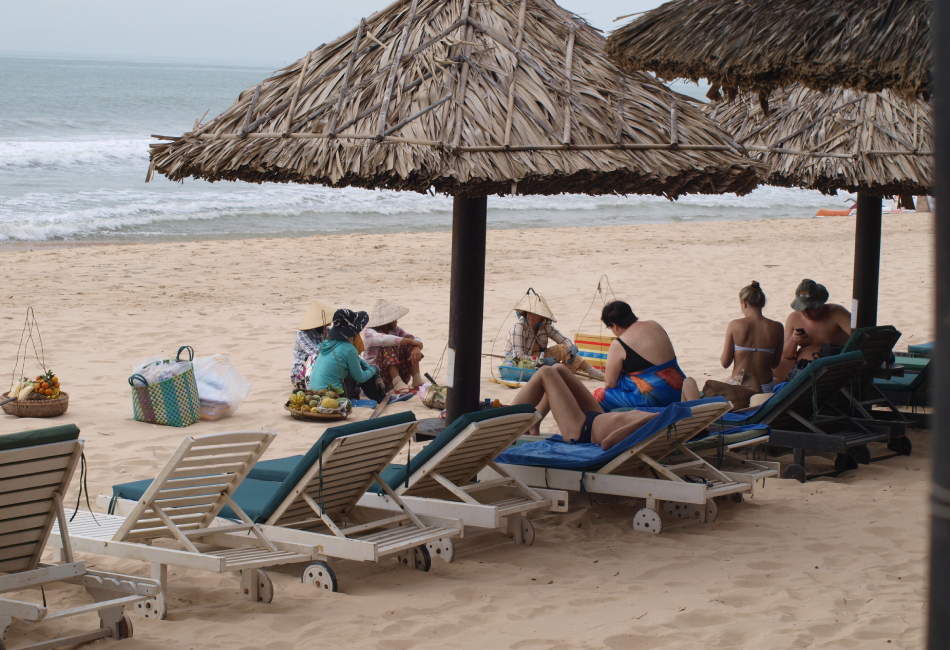

4. How to get to Hoi An?
4.1 By private car
Private cars are an excellent choice for passengers seeking comfort and freedom with an affordable price. You will be accompanied by an English-speaking driver who will provide enthusiastic support and advice on a suitable schedule. If you have a need, you can search and consult to the following link: Rent a Car in Viet Nam
4.2 By taxi
Taxi is a convenient and fast mode of transportation, it doesn’t take you much time to book a taxi. You can follow taxi companies below:
- Mai Linh Taxi: 02363.565656
- Tien Sa Taxi: 02363.797979
- VinaSun Taxi: 02362.686868
4.3 By motorbike
Motorbike is the ideal choice for travelers who want to experience a journey freely. You can stop and rest anywhere you like. Price for rental motorbike: 80.000 – 120.000 VNĐ/motorbike/day.
4.4 Join Hoi An Day Trip From Da Nang
If you are in Da Nang and want to admire the natural scenery along the journey as well as immerse yourself in the local culture, you can take a tour to Hoi An for a day trip. This trip gives you a chance to visit Hoi An Ancient Town – the UNESCO World Heritage Site, recognized as one of the most charming towns in the world. It offers you together the perfect combination of the serene beauty of rural countryside and the exploration of local culture, allowing you to experience the authentic charm of Hoi An. Explore the ancient streets of Hoi An, sample delicious dishes, and immerse yourself in the vibrant atmosphere illuminated by colorful lights. Join our Day trip from Da Nang to Hoi An and engage in a journey that promises unforgettable memories and enriching experiences.


4.5 Join Hoi An Day Trip From Hue
Discover Hoi An for a day from Hue is an exciting experience, that offers a fascinating journey through central Vietnam. Departing from Hue, the tour takes you on a scenic drive through picturesque landscapes, passing by rustic villages, verdant rice paddies, conquering Hai Van Pass and admiring the beauty of the beaches. Immerse yourself in the vibrant atmosphere as you stroll along the small alleys of Hoi An Ancient Town and browse the bustling markets filled with local handicrafts and culinary delights. Indulge in authentic Vietnamese cuisine at a local restaurant and learn about the culture and lifestyle of local people. With its blend of cultural immersion and natural beauty, the Hoi An Day Trip From Hue promises an unforgettable adventure for travelers seeking to explore the Hoi An.


5. Useful travel tips
- Best Time to Visit: The best time to visit Hoi An and Quang Nam province is during the dry season, which typically lasts from February to August. The weather is sunny with little rainfall, making it ideal for exploring the ancient town and nearby attractions.
- Pack lightweight and breathable clothing, sunscreen, a hat, sunglasses, and comfortable walking shoes, as you will most likely be traveling around the historic town and exploring the surrounding area.
- Responsible Tourism: Respect the local culture and customs while visiting Hoi An and Quang Nam province. Be mindful of local traditions, dress modestly when visiting temples or pagodas, and support local businesses and artisans.
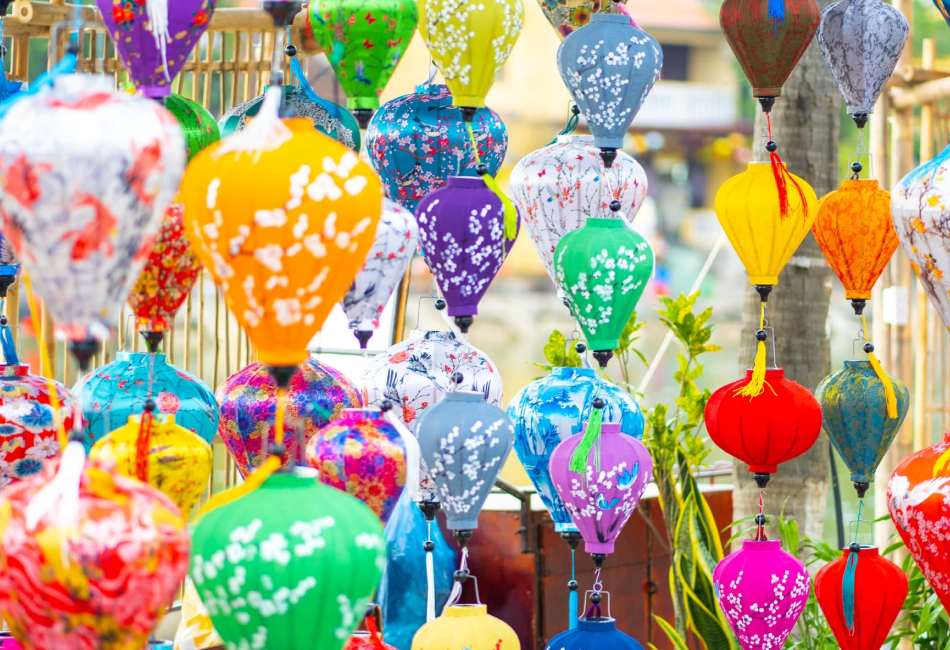

The beauty of Hoi An has never disappointed any tourists. Hoi An will be a perfect piece in your journey. Please contact us – VM Travel – Vietnam Package Tours if you are interested and want a great trip.



0 Comment